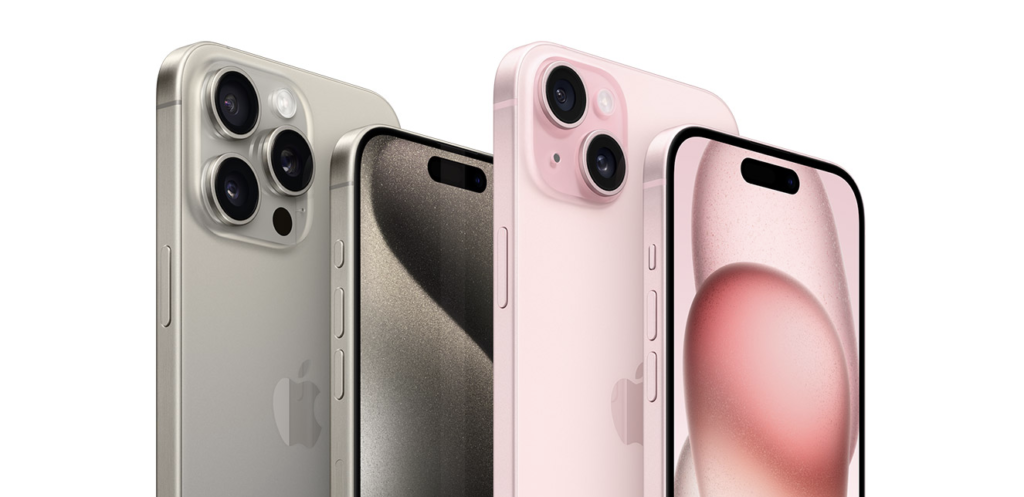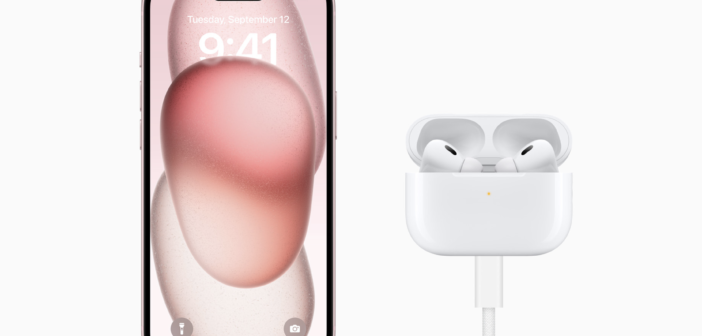It took some time, but Apple’s new iPhone 15 series phones finally ditched the company’s own lightning port for the more standardized USB-C hardware format, joining the likes of the MacBook and iPad lines, not to mention countless other Android phones all over the market. With that said, it looks like Apple’s latest move has been popular among consumers, especially folks who like to do a bit of reading online.
More specifically, data from the folks over at mobiles.co.uk shows that the buzz surrounding Apple’s new USB-C-equipped smartphones is nothing to scoff at – more than a hundred thousand news posts about the iPhone 15’s new hardware feature have gone live, proving that the move to a more standard hardware connectivity solution – no matter how late – is favourable on Apple’s behalf, at least in terms of public awareness and marketing reach.

While USB-C ranks as the top dog in mobiles.co.uk’s data chart, second place goes to Dynamic Island. The feature was introduced with the iPhone 14 series, and marks Apple’s move from its rather divisive notch design, to a more mainstream camera cutout display style also seen on competing Android brands. These aren’t the only pre-existing smartphone trends that Apple has adopted though, as the incorporation of AOD (always-on display) on the iPhone 14 series also proved popular, ranking in third place in terms of news posts.
Given this new information, it’s quite possible that Apple is feeling the building pressure from the competition. While iPhones continue to reign among the world’s top-selling smartphones, it’s no secret that they’re somewhat behind in other hardware and software aspects compared to a multitude of Android phones, especially when it comes to battery technology and camera hardware. Still, the popularity of Apple’s flagship handsets is something impressive in itself, amounting to huge sales numbers every year.

The iPhone 15 series features four different models, which include the iPhone 15 and 15 Plus, and iPhone 15 Pro and Pro Max. The Pro models come with new Titanium builds, as well as the new USB-C ports. The phones also feature the new A17 Pro chipset from Apple, which features some promising performance upgrades including ray tracing technology for gaming. Apple even went so far as to announce a handful of console ports for the iPhone 15 Pro series, which include the Resident Evil 4 Remake, as well as Resident Evil Village.
Meanwhile, the “regular” iPhone 15 and 15 Plus count as the more wallet-friendly models in Apple’s 2023 lineup. They do adapt some newer hardware, and in addition to USB-C the iPhone 15 also features the Dynamic Island camera cutout, as well as an upgraded 48MP main camera sensor, a considerable improvement over the 12MP lens that Apple has used for so long in previous iPhone models. One caveat however is that the base models run on last year’s A16 Bionic chip, instead of the A17 Pro as with the Pro models.
With all that said, USB-C is a step in the right direction for Apple, and we can only hope that the company adopts more competitive hardware on its future handsets. Buyers can grab the new iPhone 15 series starting at £799 for the base model iPhone 15, and £999 for the iPhone 15 Pro.





1 Comment
Pingback: iPhone 15 Pro: Five Accessories to Get You Started!